Solar panels
Leading Provider of Solar Panels in Melbourne for Homes and Businesses
Solar panels have become more accessible and cost-effective for both homes and businesses. Moreover, they offer a sustainable and eco-friendly energy solution, helping to reduce your environmental footprint.
As Australia’s premier solar panel provider, we prioritise the use of top-tier equipment to deliver safe and efficient solar solutions, enabling you to optimise your energy usage.
Our expertise in solar panel installation ensures that you receive the most effective solar power systems tailored for any residential or commercial setting.
If you’re in Melbourne and searching for the best solar panels in Melbourne, rest assured that we offer only the highest quality products and services.
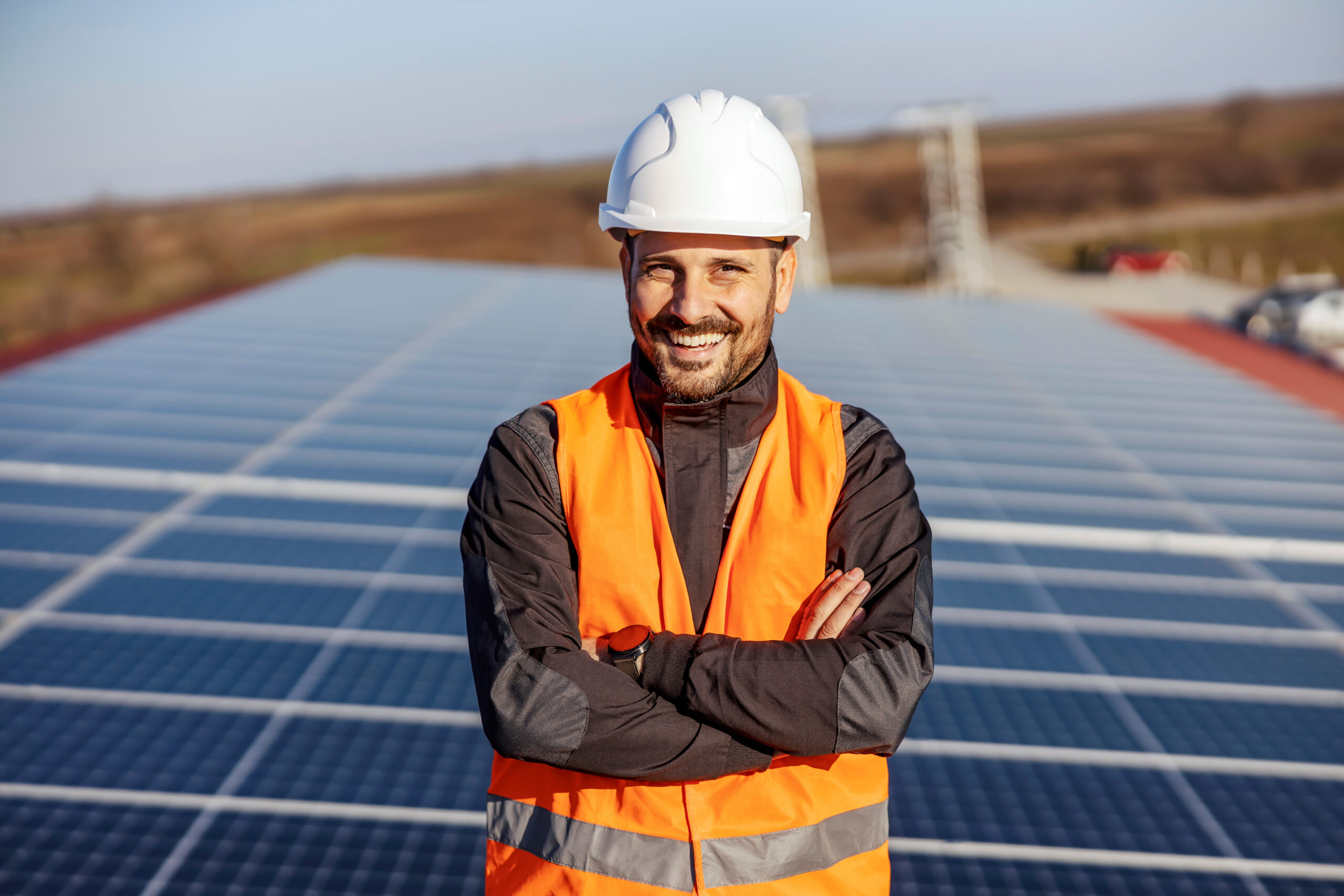
Solar Panels Technology

When exploring solar panel rebates to maximise your investment, along with the distinguishing factor among installers, it’s imperative that you choose the right solar panels and the most optimum setup.
When choosing solar panels, understanding the differences between the types available can greatly impact your decision. Two popular types are Polycrystalline and Monocrystalline panels, each with unique benefits.
Solar Panels Technology
Solar Panels Technology
Polycrystalline Solar Panels
are recognized by their bluish hue and a surface that looks somewhat like a mosaic. This type of panel is made by melting multiple fragments of silicon together to form the wafers. Polycrystalline panels are generally more cost-effective and offer a robust solution for those looking to invest in solar energy without a high upfront cost.
Monocrystalline Solar Panels
On the other hand, are made from a single, pure crystal of silicon. They are typically black and known for their uniform appearance, which allows them to absorb more sunlight efficiently. Though they come at a higher price point, they provide a higher efficiency rate and a sleeker aesthetic, making them a popular choice for residential installations.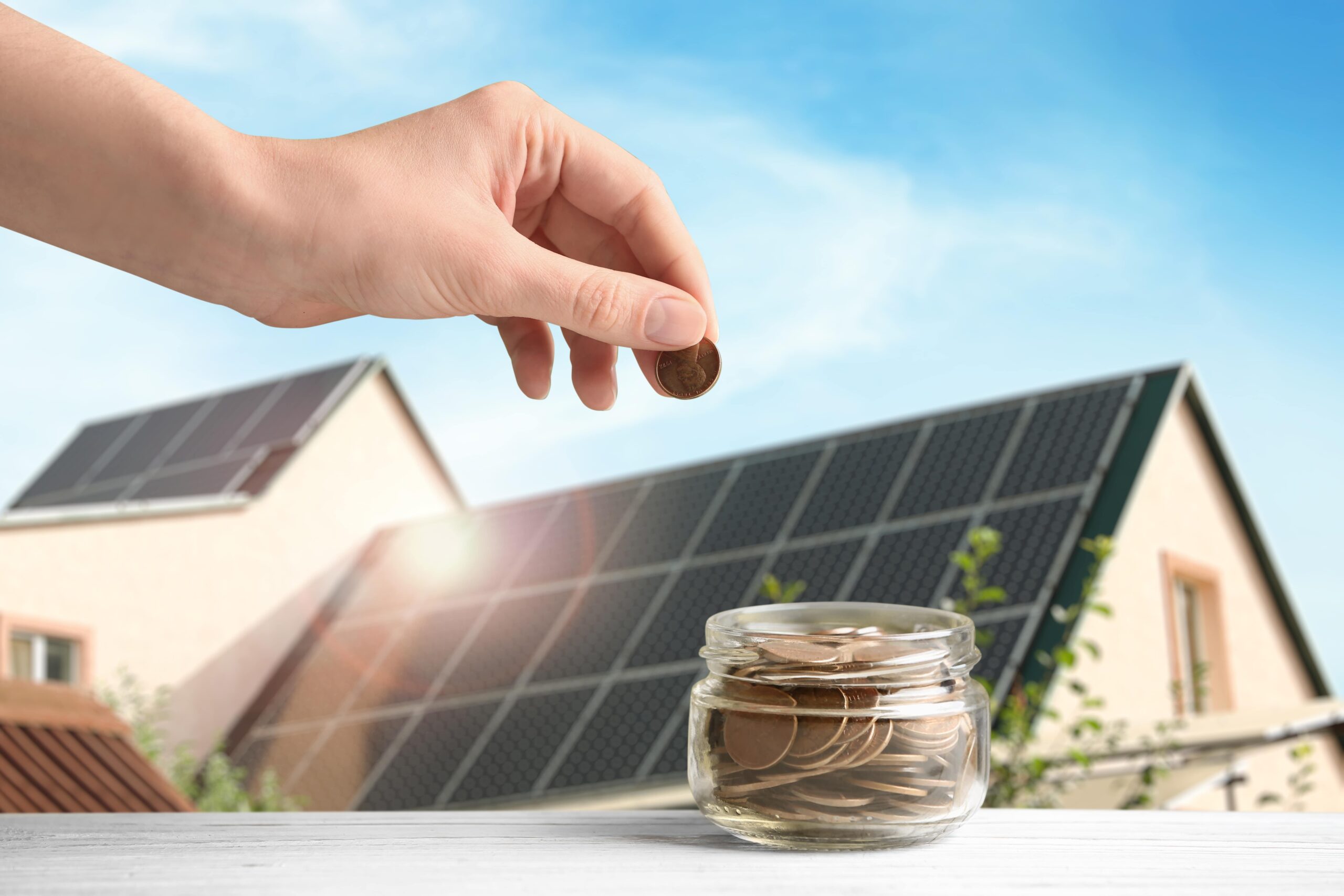
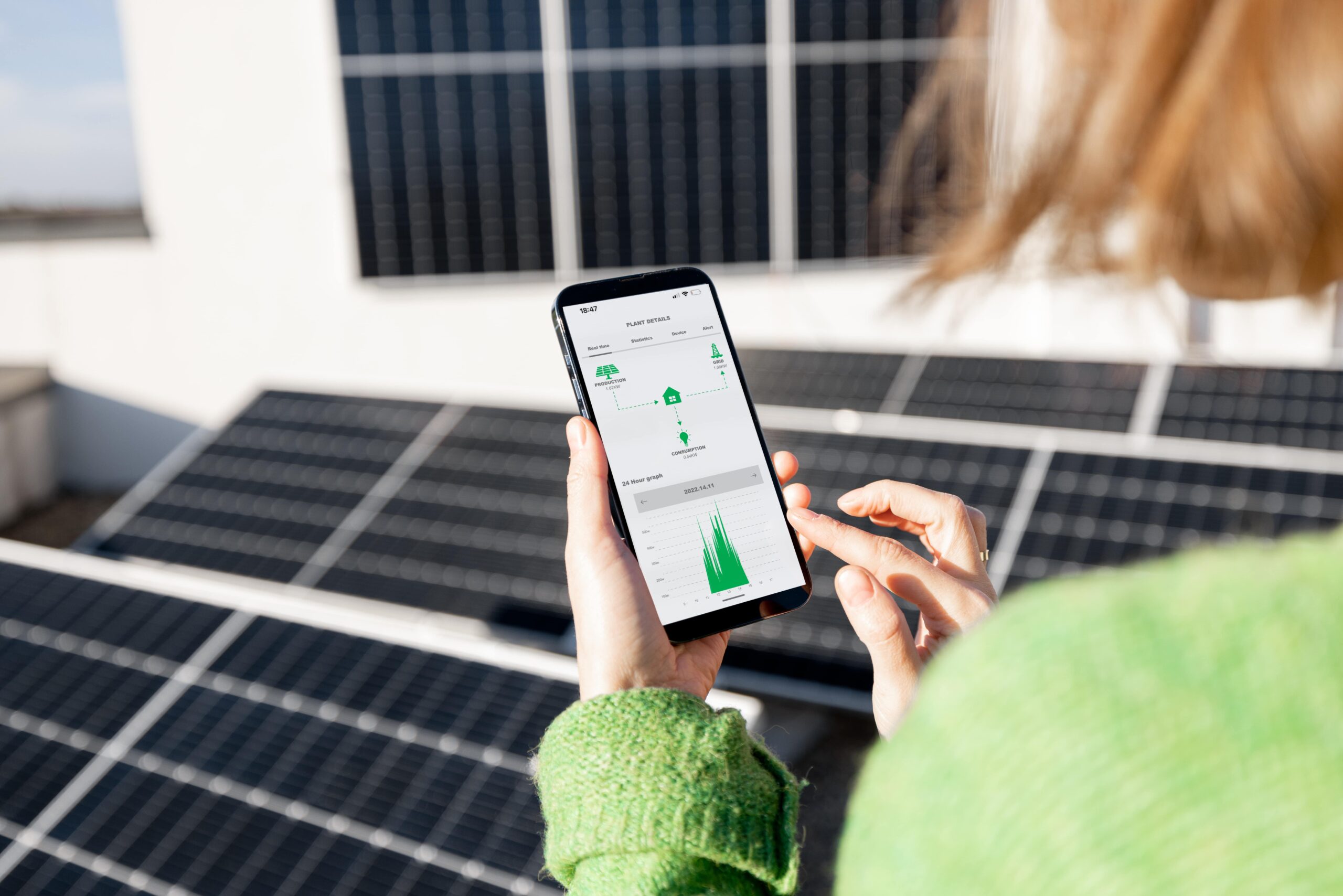
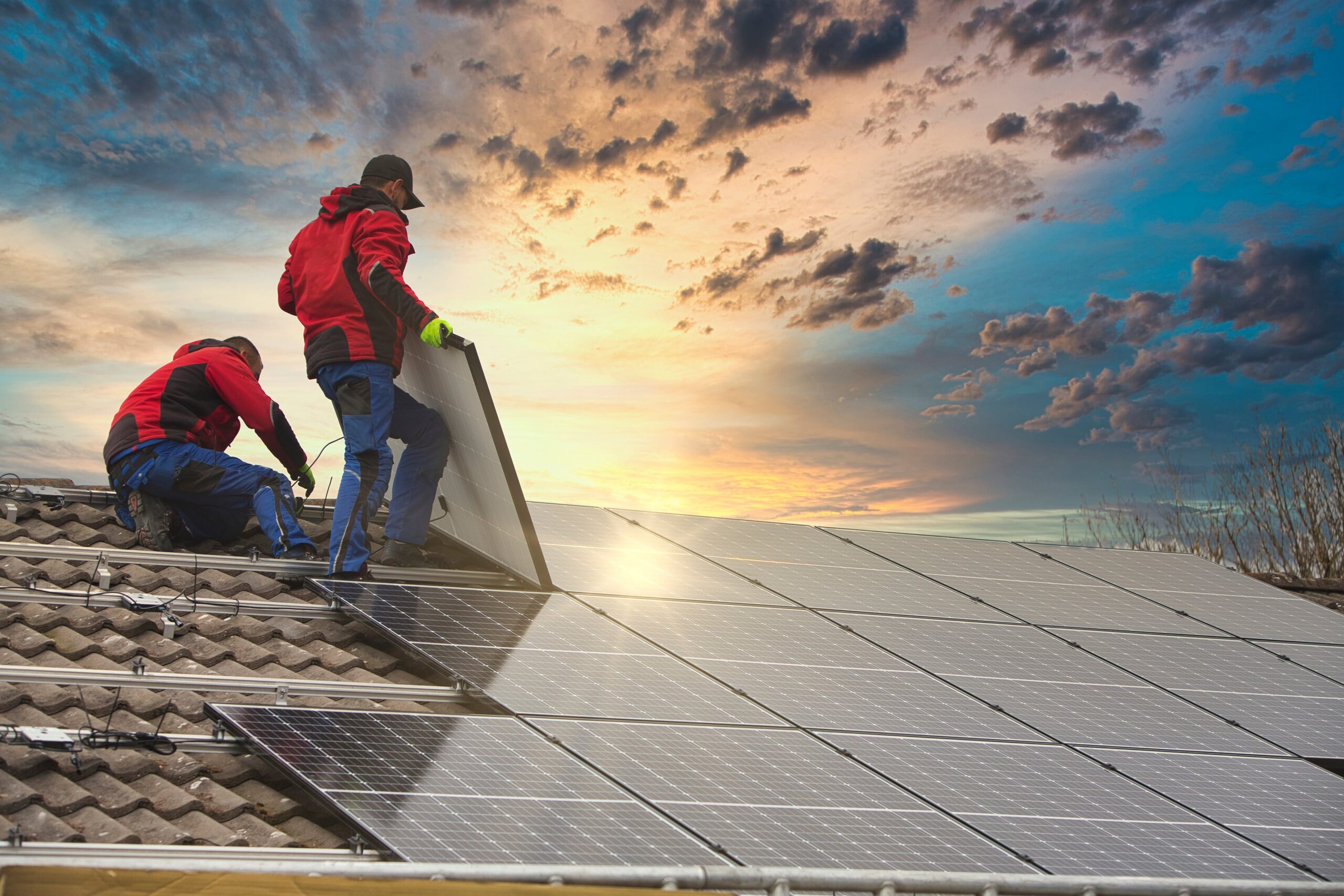
Monocrystalline Solar Panels
On the other hand, are made from a single, pure crystal of silicon. They are typically black and known for their uniform appearance, which allows them to absorb more sunlight efficiently. Though they come at a higher price point, they provide a higher efficiency rate and a sleeker aesthetic, making them a popular choice for residential installations.Monocrystalline Solar Panels
On the other hand, are made from a single, pure crystal of silicon. They are typically black and known for their uniform appearance, which allows them to absorb more sunlight efficiently. Though they come at a higher price point, they provide a higher efficiency rate and a sleeker aesthetic, making them a popular choice for residential installations.

Monocrystalline Solar Panels
On the other hand, are made from a single, pure crystal of silicon. They are typically black and known for their uniform appearance, which allows them to absorb more sunlight efficiently. Though they come at a higher price point, they provide a higher efficiency rate and a sleeker aesthetic, making them a popular choice for residential installations.
Solar Panels Technology
Solar Panels Technology
In addition to these traditional options, advanced technologies have led to more sophisticated types of solar panels, such as:
N-type Technology:
N-type solar cells are made from high-purity N-type silicon and are less susceptible to the effects of light-induced degradation. This makes them more efficient over the long term, generating more power output throughout their lifespan.
Dual-Glass Technology:
These panels use glass on both the front and back, providing added durability and protection against harsh environmental conditions. The dual-glass design also helps in extending the lifespan of the panels, making them an excellent choice for areas prone to extreme weather.
Bi-facial Panel Technology:
Bi-facial panels can absorb light from both sides, increasing their energy generation capacity significantly. Ideal for installations with reflective surfaces or open racking systems, these panels can produce up to 30% more energy than traditional single-faced panels under the right conditions.
Understanding these types and technologies can help you make an informed choice that aligns with your energy needs and environmental goals.
Choosing the Right Solar Panels
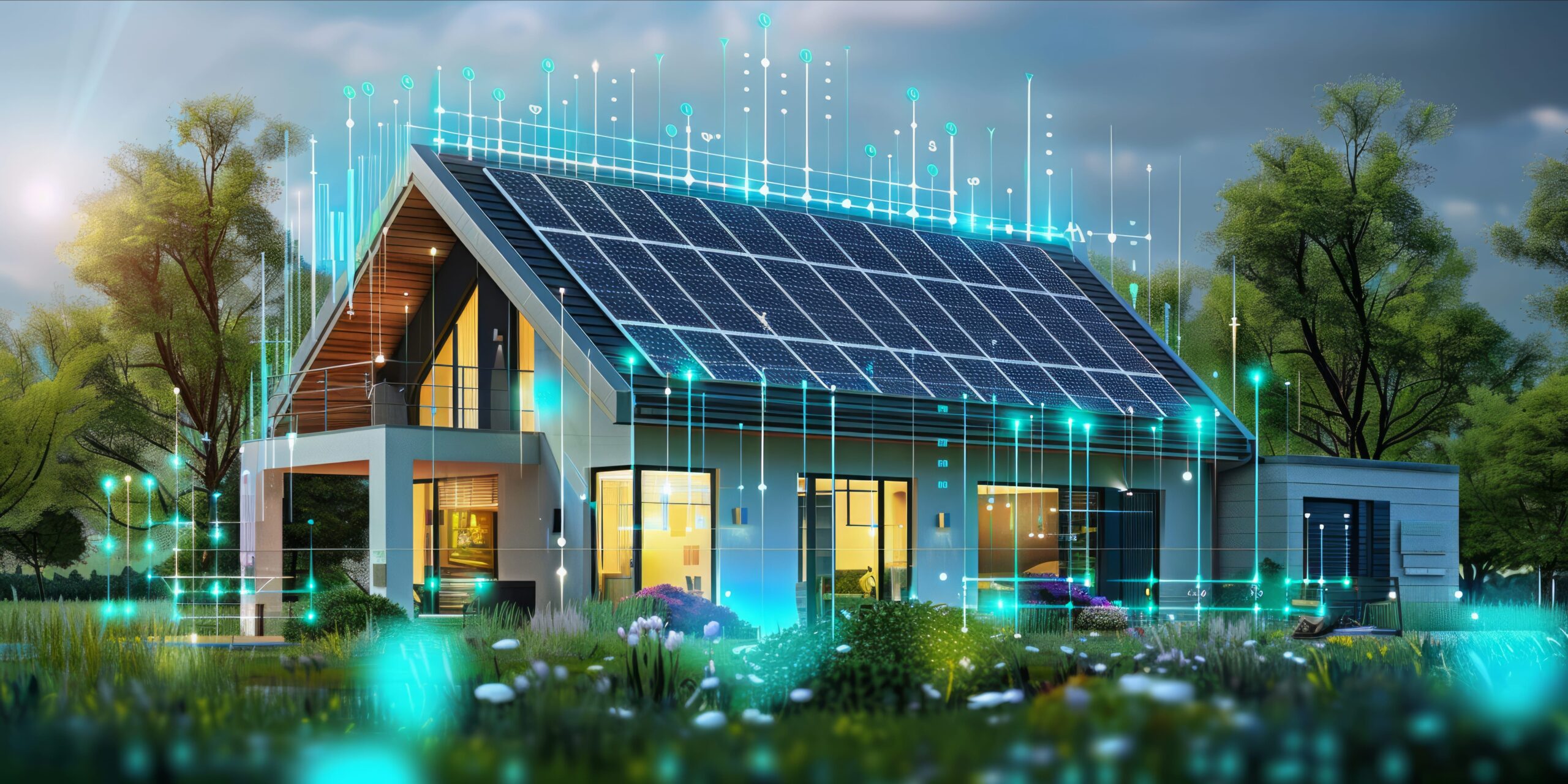
So, how do you determine which solar panels are the best fit for you? Consider the following criteria when making your decision:

What's the Price Tag in 2024?
Determining the cost of grid-connected inverters in 2024 can be tricky as they’re predominantly bundled with solar power system packages. Typically, this component constitutes around 20%of the total system cost. For instance, budget single-phase 5kW solar inverters, like Goodwe, start at $1,000, while premium models such as Fronius or SMA can fetch upwards of $2,000. Keep in mind, opting for a 3-phase 5kW inverter adds around $500 or more to these prices. Remember, never sacrifice quality for the sake of saving a few bucks; investing in a reputable brand ensures longevity and reliability, vital traits for enduring Australia’s demanding conditions.
What's the Optimal Solar Inverter Size?
Choosing the right size solar inverter can be puzzling. Generally, the inverter should handle the maximum power your solar system can generate. However, due to panel losses, the inverter’s capacity (in AC kW) can be up to 25% to 30% less than the panel array’s capacity. Therefore, panel capacity can exceed inverter capacity by up to one-third. It’s crucial to ensure your inverter’s DC input matches your solar panels’ output. Consider potential future expansions cautiously, as technological advancements may render your current panels obsolete, necessitating a new inverter.
Is it Weatherproof and Durable?
Most grid-connected inverters boast weatherproofing (typically IP65 rated), allowing placement in areas exposed to the elements. However, some may require additional weatherproofing measures, such as enclosures, if placed in harsh environments. Optimal protection from heat and weather ensures optimal performance and longevity, a crucial aspect often stipulated in warranties. We, at 365 Solar Australia, only install solar inverters that are made for the harshest conditions Australia would experience.
What's the Warranty Like?
A solar inverter’s lifespan ranges from 10 to 20 years, with warranties typically spanning 5 to 12 years. Manufacturers may offer service warranty extensions for additional coverage. Factor in warranty duration alongside other system features to make an informed decision.
Is it Expandable?
Considering future expansions? Multiple MPPT inverters offer expandability, allowing the addition of extra panels down the line. However, it’s usually more practical to install all desired panels initially or opt for a separate solar system for expansion.
What About Display and Monitoring?
Most inverters feature display lights indicating operational status and digital displays showing energy production data. Data logging enables remote monitoring via computer or smartphone, providing real-time insights into system performance. Remote monitoring is a valuable feature for keeping tabs on your system’s health and performance.
Determining the cost of grid-connected inverters in 2024 can be tricky as they’re predominantly bundled with solar power system packages. Typically, this component constitutes around 20%of the total system cost. For instance, budget single-phase 5kW solar inverters, like Goodwe, start at $1,000, while premium models such as Fronius or SMA can fetch upwards of $2,000. Keep in mind, opting for a 3-phase 5kW inverter adds around $500 or more to these prices. Remember, never sacrifice quality for the sake of saving a few bucks; investing in a reputable brand ensures longevity and reliability, vital traits for enduring Australia’s demanding conditions.
Choosing the right size solar inverter can be puzzling. Generally, the inverter should handle the maximum power your solar system can generate. However, due to panel losses, the inverter’s capacity (in AC kW) can be up to 25% to 30% less than the panel array’s capacity. Therefore, panel capacity can exceed inverter capacity by up to one-third. It’s crucial to ensure your inverter’s DC input matches your solar panels’ output. Consider potential future expansions cautiously, as technological advancements may render your current panels obsolete, necessitating a new inverter.
Most grid-connected inverters boast weatherproofing (typically IP65 rated), allowing placement in areas exposed to the elements. However, some may require additional weatherproofing measures, such as enclosures, if placed in harsh environments. Optimal protection from heat and weather ensures optimal performance and longevity, a crucial aspect often stipulated in warranties. We, at 365 Solar Australia, only install solar inverters that are made for the harshest conditions Australia would experience.
A solar inverter’s lifespan ranges from 10 to 20 years, with warranties typically spanning 5 to 12 years. Manufacturers may offer service warranty extensions for additional coverage. Factor in warranty duration alongside other system features to make an informed decision.
Considering future expansions? Multiple MPPT inverters offer expandability, allowing the addition of extra panels down the line. However, it’s usually more practical to install all desired panels initially or opt for a separate solar system for expansion.
Most inverters feature display lights indicating operational status and digital displays showing energy production data. Data logging enables remote monitoring via computer or smartphone, providing real-time insights into system performance. Remote monitoring is a valuable feature for keeping tabs on your system’s health and performance.
Inverter efficiency measures how effectively it converts solar panel-generated electricity into usable power. While higher efficiency is generally desirable, certain features like active cooling may slightly lower efficiency while increasing lifespan. Therefore, consider efficiency alongside other factors when evaluating inverter options.
Assessing Efficiency
Inverter efficiency measures how effectively it converts solar panel-generated electricity into usable power. While higher efficiency is generally desirable, certain features like active cooling may slightly lower efficiency while increasing lifespan. Therefore, consider efficiency alongside other factors when evaluating inverter options.
Choosing the Right Solar Panels
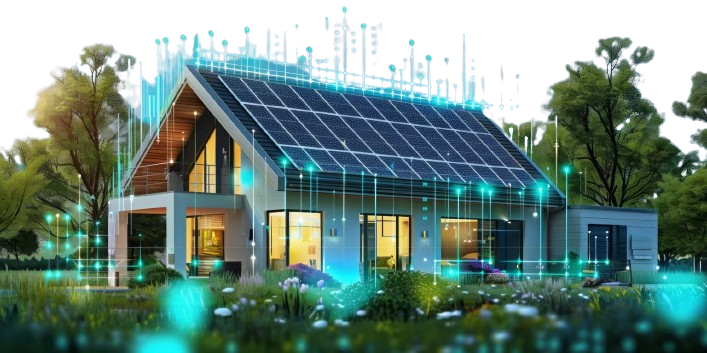
So, how do you determine which solar panels are the best fit for you? Consider the following criteria when making your decision:

Solar panel efficiency refers to the percentage of sunlight that is converted into electrical energy when it hits the panel. Generally, higher efficiency is better because it means more electricity production per square meter of panel, allowing you to generate more energy from limited roof space. With efficiency rates typically ranging from 21% to 23% in 2024, even budget panels now offer efficiencies comparable to premium models. If you’re constrained by roof space or desire the latest in photovoltaic technology, consider opting for high-efficiency panels.
In 2009, when 365 Solar Australia installers began installing solar, solar panels were considerably more expensive—costing about 20 times more than they do today. This dramatic price reduction means it’s now more feasible to install a full set of panels without worrying excessively about cost. Interestingly, due to their value, even panels not ideally oriented (such as those facing south) will still be cost-effective over time. Remember, you typically get what you pay for, so investing in quality panels from reputable brands is wise.
Judging the quality of solar panels, inverters, and installation services from a quote can be challenging as sales pitches can be biased. To evaluate panel brands, consider reading through numerous reviews from Australian customers or check out 365 Solar Australia’s comparison table for a side-by-side look at various brands and models. When it comes to warranties, look for those covering replacement and labour costs, though many might not. Ensure at least a 15-year manufacturer’s warranty on your panels, and be cautious of warranties requiring expensive service contracts, which may conflict with Australian Consumer Law protections.
There’s a debate about the quality of solar panels based on their country of manufacture. While some advocate for German-made panels and criticise Chinese-made ones, it’s important to recognise that many high-quality technological products are manufactured in China. Quality varies by brand, not necessarily by country.
Solar panels vary in specifications that describe their technical attributes. Key specifications to consider include the Temperature Coefficient of Pmax, which indicates how much efficiency is reduced at higher temperatures—ideally, the lower, the better. Power tolerance is another crucial spec, indicating the reliability of the panel’s output compared to its rated capacity. Panels with a positive power tolerance ensure you receive at least the stated output.
Solar panels significantly reduce environmental impact compared to fossil fuels. While all panels contribute to this benefit, choosing panels with long warranties and high efficiency can minimise greenhouse gas emissions from production and transportation. Some manufacturers are more proactive about reducing emissions, and it’s worth considering their products. Additionally, options for recycling panels are improving, with initiatives in Europe leading to a 95% material recovery rate for recycled panels.
The appearance of solar panels can also be a deciding factor. The standard options include panels with silver frames, black frames, or all-black panels, depending on your personal preference. Each offers a different aesthetic that may better suit the style of your home or building.
Choosing the Right Solar Panels
Choosing the Right Solar Panels
Solar panel efficiency refers to the percentage of sunlight that is converted into electrical energy when it hits the panel. Generally, higher efficiency is better because it means more electricity production per square meter of panel, allowing you to generate more energy from limited roof space. With efficiency rates typically ranging from 21% to 23% in 2024, even budget panels now offer efficiencies comparable to premium models. If you’re constrained by roof space or desire the latest in photovoltaic technology, consider opting for high-efficiency panels.
In 2009, when 365 Solar Australia installers began installing solar, solar panels were considerably more expensive—costing about 20 times more than they do today. This dramatic price reduction means it’s now more feasible to install a full set of panels without worrying excessively about cost. Interestingly, due to their value, even panels not ideally oriented (such as those facing south) will still be cost-effective over time. Remember, you typically get what you pay for, so investing in quality panels from reputable brands is wise.
Judging the quality of solar panels, inverters, and installation services from a quote can be challenging as sales pitches can be biased. To evaluate panel brands, consider reading through numerous reviews from Australian customers or check out 365 Solar Australia’s comparison table for a side-by-side look at various brands and models. When it comes to warranties, look for those covering replacement and labour costs, though many might not. Ensure at least a 15-year manufacturer’s warranty on your panels, and be cautious of warranties requiring expensive service contracts, which may conflict with Australian Consumer Law protections.
There’s a debate about the quality of solar panels based on their country of manufacture. While some advocate for German-made panels and criticise Chinese-made ones, it’s important to recognise that many high-quality technological products are manufactured in China. Quality varies by brand, not necessarily by country.
Solar panels vary in specifications that describe their technical attributes. Key specifications to consider include the Temperature Coefficient of Pmax, which indicates how much efficiency is reduced at higher temperatures—ideally, the lower, the better. Power tolerance is another crucial spec, indicating the reliability of the panel’s output compared to its rated capacity. Panels with a positive power tolerance ensure you receive at least the stated output.
Solar panels significantly reduce environmental impact compared to fossil fuels. While all panels contribute to this benefit, choosing panels with long warranties and high efficiency can minimise greenhouse gas emissions from production and transportation. Some manufacturers are more proactive about reducing emissions, and it’s worth considering their products. Additionally, options for recycling panels are improving, with initiatives in Europe leading to a 95% material recovery rate for recycled panels.
The appearance of solar panels can also be a deciding factor. The standard options include panels with silver frames, black frames, or all-black panels, depending on your personal preference. Each offers a different aesthetic that may better suit the style of your home or building.
1. Solar Panel Efficiency
Solar panel efficiency refers to the percentage of sunlight that is converted into electrical energy when it hits the panel. Generally, higher efficiency is better because it means more electricity production per square meter of panel, allowing you to generate more energy from limited roof space. With efficiency rates typically ranging from 21% to 23% in 2024, even budget panels now offer efficiencies comparable to premium models. If you’re constrained by roof space or desire the latest in photovoltaic technology, consider opting for high-efficiency panels.
2. Solar Panel Cost
In 2009, when 365 Solar Australia installers began installing solar, solar panels were considerably more expensive—costing about 20 times more than they do today. This dramatic price reduction means it’s now more feasible to install a full set of panels without worrying excessively about cost. Interestingly, due to their value, even panels not ideally oriented (such as those facing south) will still be cost-effective over time. Remember, you typically get what you pay for, so investing in quality panels from reputable brands is wise.
3. Solar Panel Quality and Warranty
Judging the quality of solar panels, inverters, and installation services from a quote can be challenging as sales pitches can be biased. To evaluate panel brands, consider reading through numerous reviews from Australian customers or check out 365 Solar Australia’s comparison table for a side-by-side look at various brands and models. When it comes to warranties, look for those covering replacement and labour costs, though many might not. Ensure at least a 15-year manufacturer’s warranty on your panels, and be cautious of warranties requiring expensive service contracts, which may conflict with Australian Consumer Law protections.
4. Manufacturing – Country of Origin
There’s a debate about the quality of solar panels based on their country of manufacture. While some advocate for German-made panels and criticise Chinese-made ones, it’s important to recognise that many high-quality technological products are manufactured in China. Quality varies by brand, not necessarily by country.
5. Solar Panel Specifications
Solar panels vary in specifications that describe their technical attributes. Key specifications to consider include the Temperature Coefficient of Pmax, which indicates how much efficiency is reduced at higher temperatures—ideally, the lower, the better. Power tolerance is another crucial spec, indicating the reliability of the panel’s output compared to its rated capacity. Panels with a positive power tolerance ensure you receive at least the stated output.
6. Environmental Benefit of Solar Panels
Solar panels significantly reduce environmental impact compared to fossil fuels. While all panels contribute to this benefit, choosing panels with long warranties and high efficiency can minimise greenhouse gas emissions from production and transportation. Some manufacturers are more proactive about reducing emissions, and it’s worth considering their products. Additionally, options for recycling panels are improving, with initiatives in Europe leading to a 95% material recovery rate for recycled panels.
7. Aesthetics (How the Solar Panels Look)
The appearance of solar panels can also be a deciding factor. The standard options include panels with silver frames, black frames, or all-black panels, depending on your personal preference. Each offers a different aesthetic that may better suit the style of your home or building.

All-black solar panels may perform slightly less efficiently than their counterparts because they tend to heat up a bit more. However, the difference in performance is minimal.
There are options to integrate panels into your roof, while another option is solar roof tiles. For unique architectural features like curved roofs, flexible solar panels are also available. However, the seamless look of building-integrated solar power (BIPV) typically comes with a significantly higher price tag.
It’s generally more cost-effective to opt for a more straightforward, utilitarian design. But before deciding, consider how visible the panels will be from the ground. If they’re not in plain sight, there may be little value in choosing aesthetically pleasing options that come at a premium.

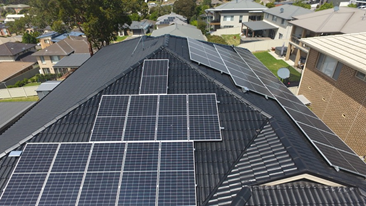
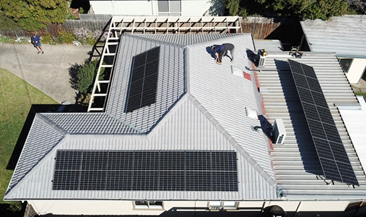
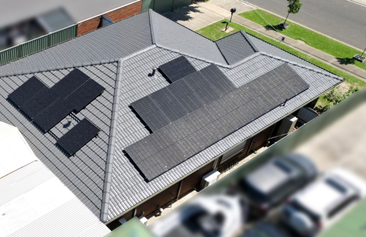
All-black solar panels may perform slightly less efficiently than their counterparts because they tend to heat up a bit more. However, the difference in performance is minimal.
There are options to integrate panels into your roof, while another option is solar roof tiles. For unique architectural features like curved roofs, flexible solar panels are also available. However, the seamless look of building-integrated solar power (BIPV) typically comes with a significantly higher price tag.
It’s generally more cost-effective to opt for a more straightforward, utilitarian design. But before deciding, consider how visible the panels will be from the ground. If they’re not in plain sight, there may be little value in choosing aesthetically pleasing options that come at a premium.

Solar Panel Brands we Work With

365 Solar Australia has teamed up with leading solar PV manufacturers to bring you the finest solar panels in the global market. We carefully choose premium PV modules from producers known for their exceptional reliability to ensure we deliver top-quality products. Whether you need solar solutions for your home or business, 365 Solar Australia offers superior solar panels sourced from trusted tier-1 manufacturers. These manufacturers have robust support processes in place for Australian consumers and provide high-quality solar power inverters from well-known brands.
Solar Panel Brands We Work with
Solar Panel Brands we Work With
365 Solar Australia has teamed up with leading solar PV manufacturers to bring you the finest solar panels in the global market. We carefully choose premium PV modules from producers known for their exceptional reliability to ensure we deliver top-quality products. Whether you need solar solutions for your home or business, 365 Solar Australia offers superior solar panels sourced from trusted tier-1 manufacturers. These manufacturers have robust support processes in place for Australian consumers and provide high-quality solar power inverters from well-known brands.
Sunpower
Top of the range panels with incredible performance and the strongest warranties.

Top of the range panels with incredible performance and the strongest warranties.
REC
Super premium panels that look as fantastic as they perform.

Super premium panels that look as fantastic as they perform.
Q cells
High-end solar panels with incredible longevity.

High-end solar panels with incredible longevity.
Trina
Best value for money panel in the market.

Best value for money panel in the market.
Canadian Solar
One of the best brands and great value for money.

One of the best brands and great value for money.
Longi Solar
Great value for panels that can be compared to the most premium brands.

Great value for panels that can be compared to the most premium brands.
Jinko Solar
Great quality and cost-effective, a great residential and commercial consideration.

Great quality and cost-effective, a great residential and commercial consideration.
JA Solar
Exceptional panels that are easy to maintain.

Exceptional panels that are easy to maintain.
TW solar
Great residential installations, fantastic for businesses too!

Great residential installations, fantastic for businesses too!
Jollywood
Easy on the pocket, fantastic results when you need reliable power generation.

Easy on the pocket, fantastic results when you need reliable power generation.
JA Solar
Exceptional panels that are easy to maintain.
TW solar
Great residential installations, fantastic for businesses too!
Speak To an Expert About Solar Panels for Your Home or Business
Speak To an Expert About Solar Panels for Your Home or Business
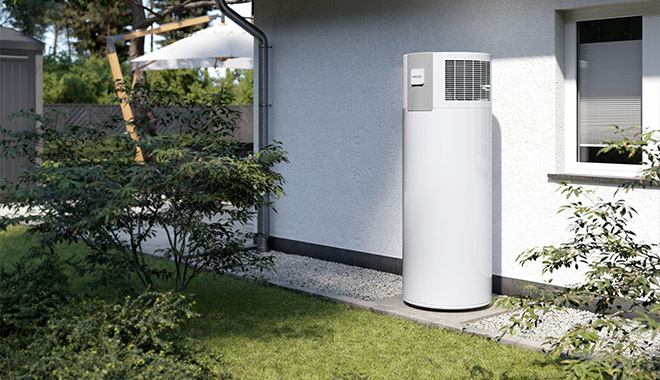
Understanding Hot Water Heat Pumps

Heat pumps are innovative water heaters designed to utilise heated air to warm water stored in an insulated storage tank. They operate using only about one-third of the energy required by conventional water heaters, saving up to 70% on hot water energy costs. Also, unlike other domestic water heater systems, heat pumps transfer heat rather than generate it.
This substantial reduction in energy consumption and the resulting significant cost savings have encouraged many individuals and families to upgrade their domestic water heater systems.
How a Hot Water Heat Pump Works
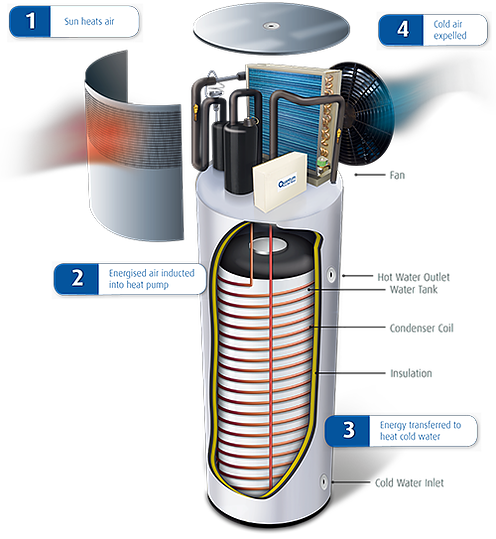
Conventional domestic water heater systems, such as electric or gas water heaters, use electricity or natural gas to provide hot water for homes. However, heat pumps use electricity only to separate heat from the surrounding air.
Using a reverse refrigerator cycle, a heat pump extracts heat from the environment or inside your home. Heat in the air is then absorbed by a CFC-free refrigerant inside the evaporator coil, while cool dehumidifier air is expelled.

The refrigerant is then pumped through a compressor, which increases the temperature further. The heat is transferred throughout the insulated water tank cylinder by water or refrigeration cycle process.
Essentially, a heat pump will draw in air from its surroundings, with little significance to how hot or warm that air is. This is because that air is then pressurised, and this pressure causes the atoms in the air to bump into each other, causing friction, which then leads to an increase in temperature. This heat energy is then used to heat your water to the desired degree.
Transferring heat instead of generating it makes hot water heat pumps 2 to 5 times more energy efficient than a standard electric water heater, saving you money and energy. Essentially, this system operates as a renewable hot water solution but doesn’t depend on solar power, unlike solar water heaters in Australia. Now, combine that with solar panels, and you have just exponentially increased your savings!
Hot water heat pumps can last 10 to 15 years on average. However, they can last over 15 years when used and maintained properly.
Types of Hot Water Heat Pumps
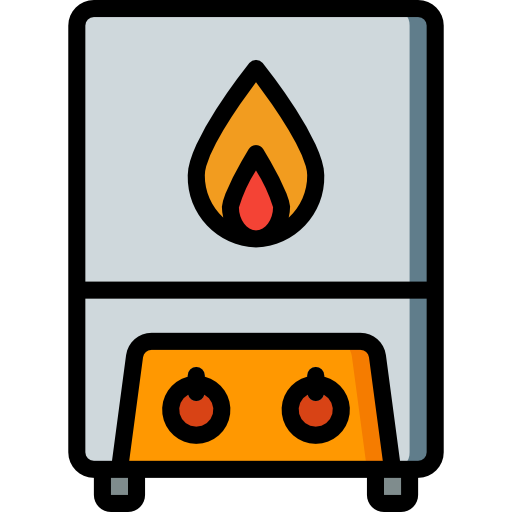
Integrated vs. Split System

Air-source vs. Ground-source
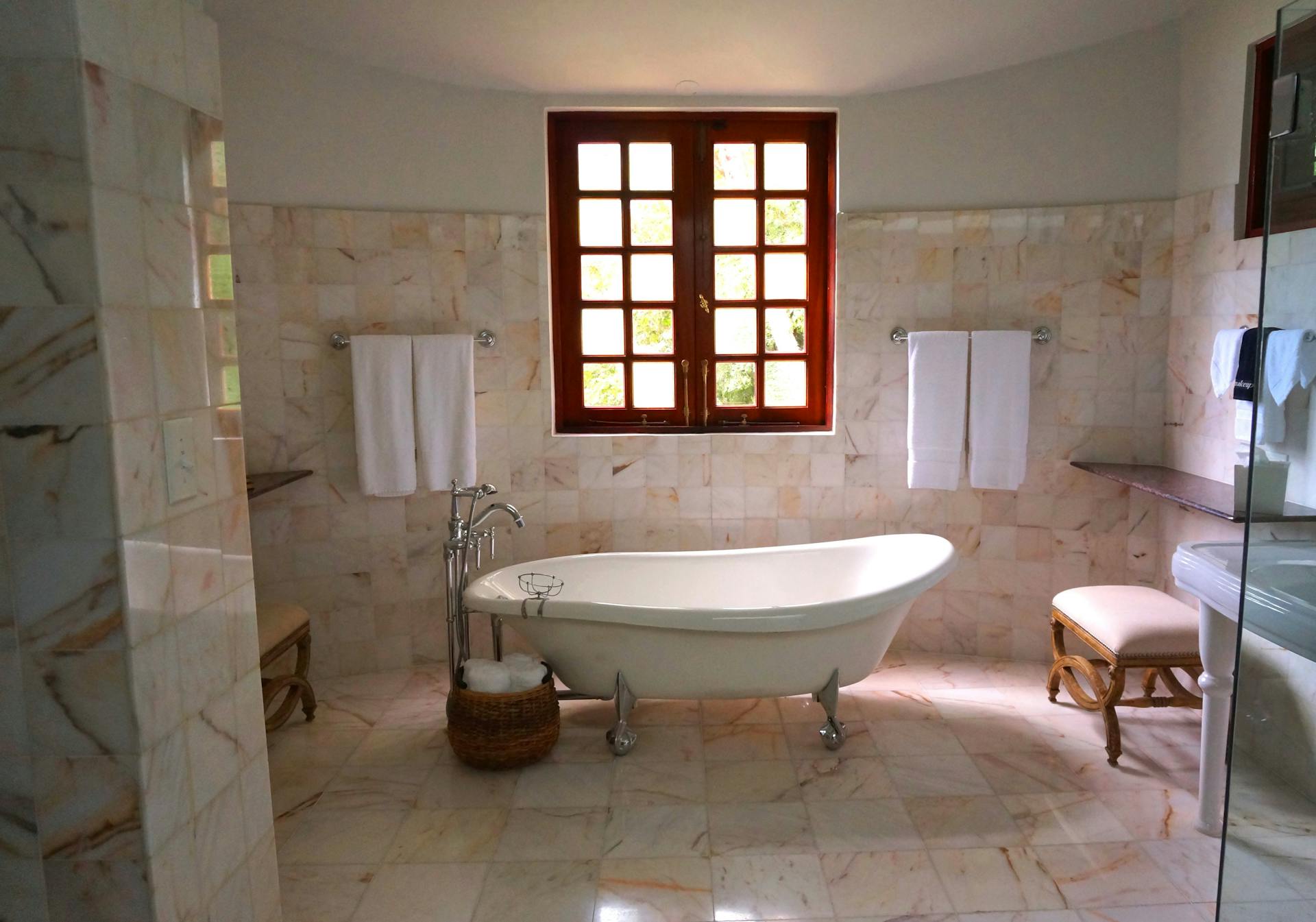
Benefits of installing a Hot Water Heat Pump

- Hot water heat pumps are eco-friendly alternatives that do not depend on fuel like standard electric, gas and solar water heaters in Australia.
- With significantly lower energy consumption compared to hot water units like electric, gas and solar water heaters, heat pumps can reduce your utility bills by up to 70%.
- Installing and using a heat pump makes for increased energy efficiency, whilst providing reliable, flawless hot water for home and business premises. All the while, you’d also be reducing your carbon footprint.
- You can access government rebates for replacing your conventional electric or gas water heater with an efficient hot water heat pump, reducing the outlay significantly.
- Heat pumps help you save money long-term since they are cheaper to maintain than hot water systems like standard gas and solar water heaters in Australia.
- Although a heat pump utilises heated air by the sun like solar water heaters, they do not require solar panels to be installed on your rooftop, making their installation easier. However, it requires a flat and sturdy base for optimal positioning.
Preferred Brands
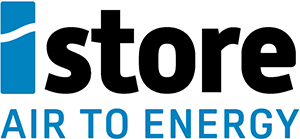
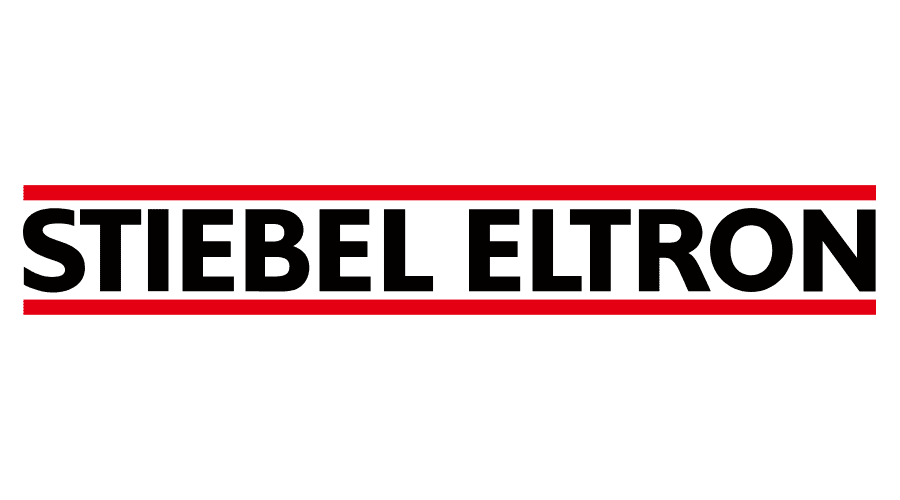
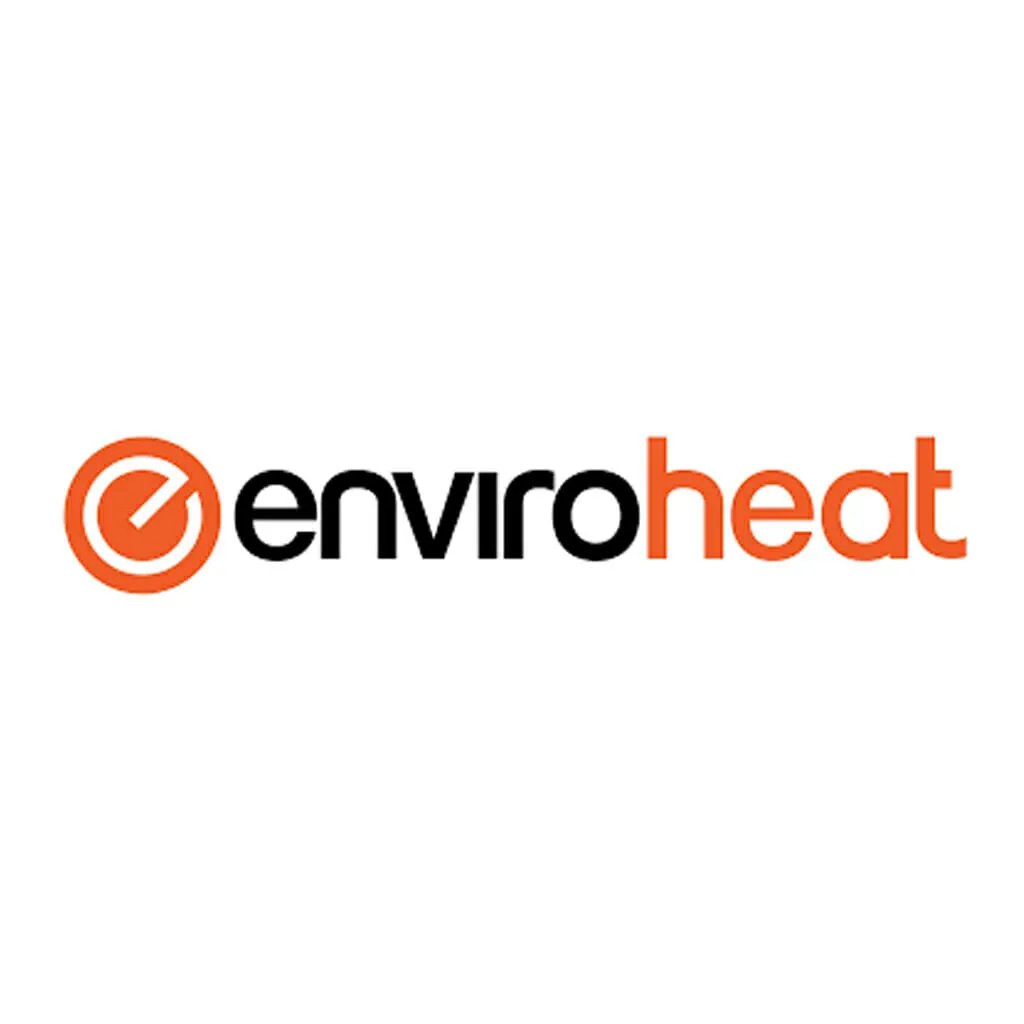




At 365 Solar Australia, we only install high-quality hot water heat pumps from reputable brands such as iStore, Rheem Ambiheat, Steibel Eltron, Enviroheat Enviroflow, Rinnai, and Reclaim Energy. We do have access to several other brands, but refuse to work with any system that is cheap-and-nasty.
Choosing the Right Hot Water Heat Pump








How Much You Can Save By Installing a Hot Water Heat Pump

An average three-person household can save between $372 and $680 annually by switching from a traditional water heater unit to an efficient hot water heat pump. In addition, many utility companies offer rebates for such upgrades.
In Victoria, you can save up to $2000 with Federal and Victorian government rebates when you make the switch and install a hot water heat pump system. These rebates include:
- Australian Government Small-Scale Renewable Energy Scheme: Purchasers of new hot water heat pump systems, including those replacing existing hot water systems, qualify for the Small-scale Technology Certificates (STCs). This is a rebate offered by the federal government to incentivise investments in small renewable energy systems.
- The Victorian Energy Upgrades (VEU) program: This program extends special discounts on selected hot water heat pump systems. When you replace an inefficient gas or electric water heater with a heat pump, you can potentially receive a rebate of between $330 and $840, depending on the size and efficiency of the unit installed.
- The Solar Victoria Hot Water Rebate: This rebate is handed out to eligible households, enabling them to save up to $1000 on the purchase and installation of an eligible hot water heat pump. It is an ideal opportunity for homeowners to upgrade to a more efficient and eco-conscious hot water system, helping you reduce energy bills and reduce your environmental impact.
